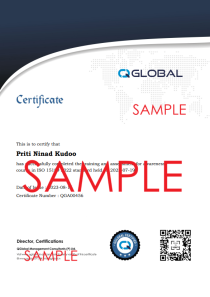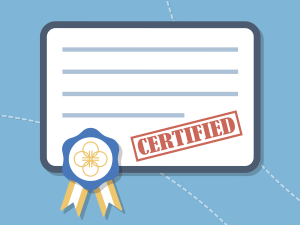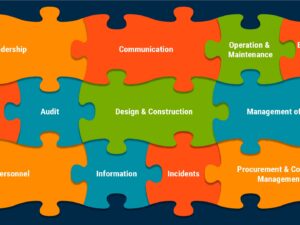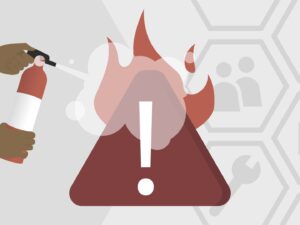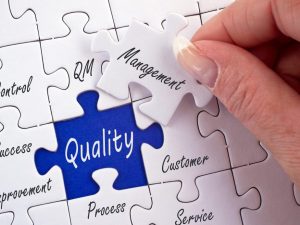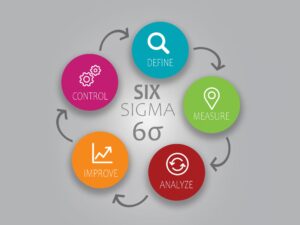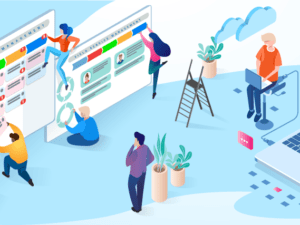Lean Six Sigma Green Belt - Certificate Course
- Description
- Curriculum

A Six Sigma (6 Sigma) Certification is becoming an expectation in the business world. Six Sigma Online training meets the demands of busy professionals with a self-paced approach, rather than the complications of on-site providers. Six Sigma trains individuals to stop what they are doing; examine how well they have done it; and to then implement improvements to iron out defects. Most organizations focus only on the operation of their business, seldom stopping to ask themselves, “What went wrong?” Six Sigma DMAIC directs people to continually evaluate critical processes. Our Six sigma certificate course will help you develop the necessary skills to be part of a six sigma implementation project team.
Who Should Attend?
- QA managers
- Quality engineers
- Engineers
- Quality analysts, quality auditors
- Those who wish to explore Six Sigma methodology
- Those who implement Six Sigma projects
- Company executives who lead Six Sigma projects.
- Six sigma trainers
- IT and Finance Engineers
- Business Analysts
Key Benefits
- Understand the importance of six sigma methodology and how to use six sigma methodology to monitor and control a process
- Understand measures of central tendency
- Understand the difference between a population parameter and a sample statistic
- Distinguish between enumerative (descriptive) and inferential (analytical) studies
- Demonstrate an understanding of troubleshooting
- Understand when to use various types of variable data control charts
- Understand the characteristics of a normal distribution and how to use a normal curve in estimating proportion of product that meets specifications
- Understand how to plan, organize, and run a successful designed experiment
Learning & Evaluation Method
This is a live and interactive course. Once you purchase the course, our team will contact you to plan the training. No matter where you are located, we schedule the classes based on your convenience and time zone. You can plan to attend the training in sessions of 4 or 8 hr duration, based on how much time you can spend in a day.
Certification
There are increasing numbers of organisations, who prefer candidates those who have certain certifications from recognized programs. Certification demonstrates your commitment to superior professionalism, upholding industry standards, and continued learning. These merits can help boost your professional credibility and prestige within your own network, in your organisation, with your current clients, and when pursuing new business opportunities. After the successful completion of the course and final exam, you will be awarded with a certificate of completion issued by QGlobal. Your credentials will be made available in the global online directory and can be verified by anyone searching with the certificate number. Without doubt we can say that our training courses are well recognized and sought after by organisations across various geographies.
Buy for group Are you planning to buy this course for a group? We have the best prices for you! Select ‘Buy for Group’ option and add to the cart. You will get a discount of 60 – 75% for a group of up to 10 participants. To make a group purchase, create your group name and add individual emails of up to 10 participants. Each participant will get the access to the course materials, exam and the certificate. We will arrange one live-online session for the entire group.
Total: 206 Courses View all
Total: 206 Courses View all
-
16S1 Introduction to six sigma
-
26S2 Applications of six sigma
- What is Six Sigma?
- Why Six Sigma?
- The Six Sigma philosophy
- The change imperative
- Change agents and their effects on organizations
- Implementing Six Sigma
- Timetable
- Infrastructure
- Six Sigma deployment and management
- Six Sigma communication plan
- Six Sigma organizational roles and responsibilities
- Selecting the ‘‘Belts’’
- Integrating Six Sigma and related initiatives
- Deployment to the supply chain
- Change agent compensation and retention
-
36S3 Lean concepts
- Attributes of good metrics
- Six Sigma versus traditional three sigma performance
- The balanced scorecard
- Measuring causes and effects
- Information systems
- Customer perspective
- Internal process perspective
- Innovation and learning perspective
- Financial perspective
- Strategy deployment plan
- Information systems requirements
- Integrating Six Sigma with other information systems
- Technologies
- OLAP, data mining, and Six Sigma
- Dashboard design
- Dashboards for scale data
- Dashboards for ordinal data
- Dashboards for nominal data
- Setting organizational key requirements
- Benchmarking
-
46S4 Six sigma concepts
- Elements of customer-driven organizations
- Becoming a customer- and market-driven enterprise
- Elements of the transformed organization 98 Surveys and focus groups strategies for communicating with customers and employees
- Surveys
- Focus groups
- Other customer information systems
- Calculating the value of retention of customers
- Complaint handling
- Kano model of customer expectations
- Customer expectations, priorities, needs, and ‘‘voice’’
- Garden variety Six Sigma only addresses half of the Kano customer satisfaction model
- Quality function deployment (QFD)
- Data collection and review of customer expectations, needs, requirements and specifications
- The Six Sigma process enterprise
- Examples of processes
- The source of conflict
- A resolution to the conflict
- Process excellence
- Using QFD to link Six Sigma projects to strategies
- The strategy deployment matrix
- Deploying differentiators to operations
- Deploying operations plans to projects
- Linking customer demands to budgets
- Structured decision-making
- Category importance weights
- Subcategory importance weights
- Global importance weights
-
56S5 Approaching the problem
- Training needs analysis
- The strategic training plan
- Training needs of various groups
- Post-training evaluation and reinforcement
-
66S6 Defining a process
- Six Sigma teams
- Process improvement teams
- Work groups
- Quality circles
- Other self-managed teams
- Team dynamics management, including conflict resolution
- Stages in group development
- Common problems
- Member roles and responsibilities
- Facilitation techniques
- When to use an outside facilitator
- Selecting a facilitator
- Principles of team leadership and facilitation
- Facilitating the group task process
- Facilitating the group maintenance process
- Team performance evaluation
- Team recognition and reward
-
76S7 Quality
- Choosing the right projects
- Customer value projects
- Shareholder value projects
- Other Six Sigma projects
- Analyzing project candidates
- Benefit-cost analysis
- A system for assessing Six Sigma projects
- Other methods of identifying promising projects
- Throughput-based project selection
- Multi-tasking and project scheduling
- Summary and preliminary project selection
- Tracking Six Sigma project results
- Financial results validation
- Financial analysis
- Lessons learned capture and replication
-
86S8 Implementing 6 sigma
-
96S9 Six sigma team management
-
106S10 Process improvement
-
116S11 Define
-
126S12 Measure
-
136S13 Analyze
-
146S14 Improve
-
156S15 Control
-
166S16 Intermediate graphical analysis
-
176S17 Normal probability distributions
-
186S18 Correlation and regression
-
196S19 Non-normal probability distributions
-
206S20 Hypothesis testing
-
216S21 Sample size
-
226S22 Advanced control charts
-
236S23 Applying statistics through 6 sigma

